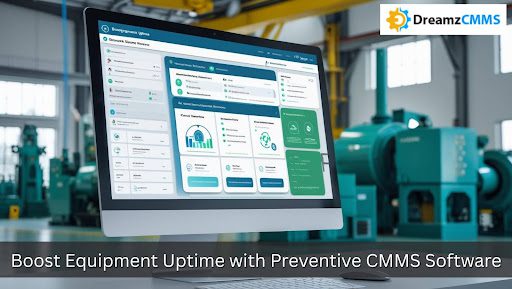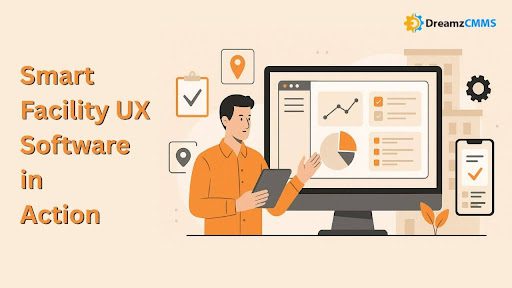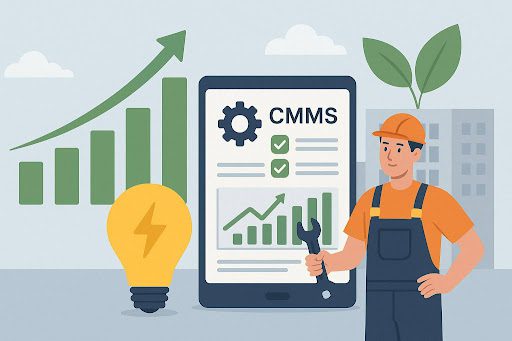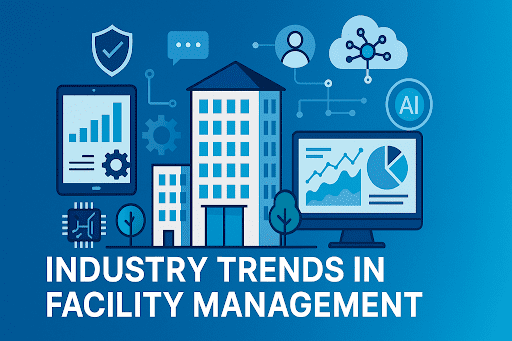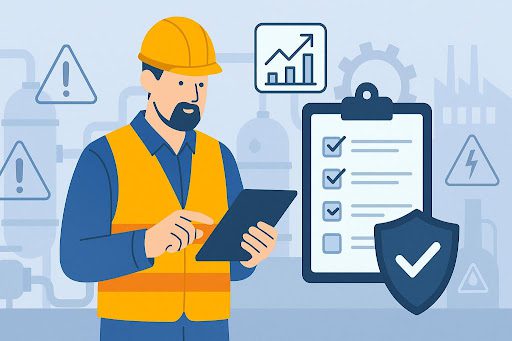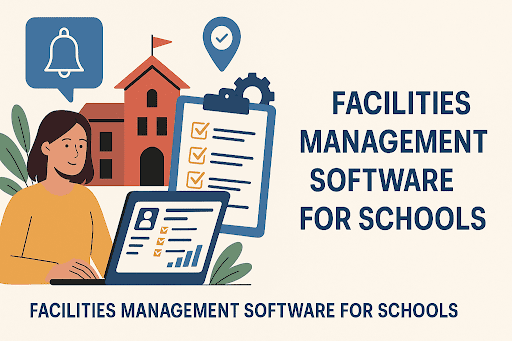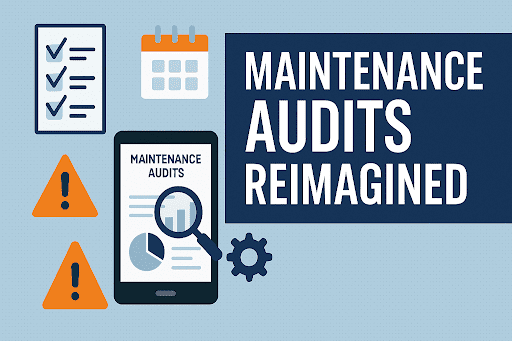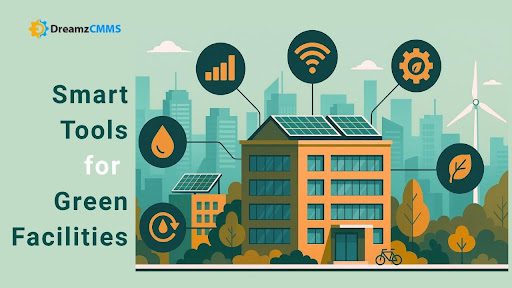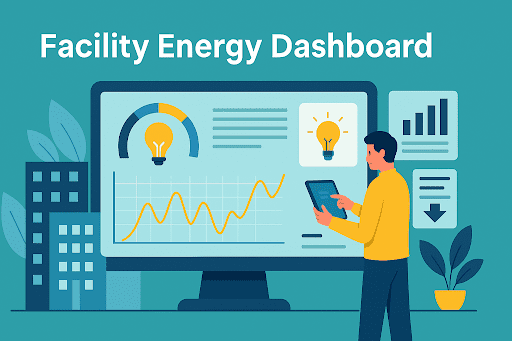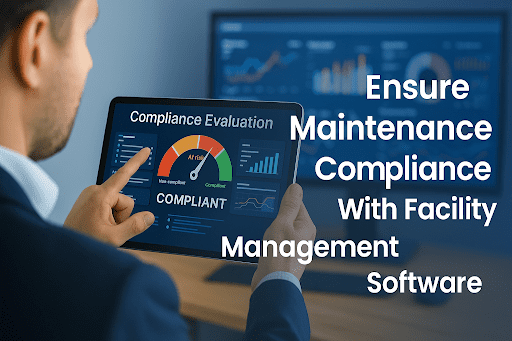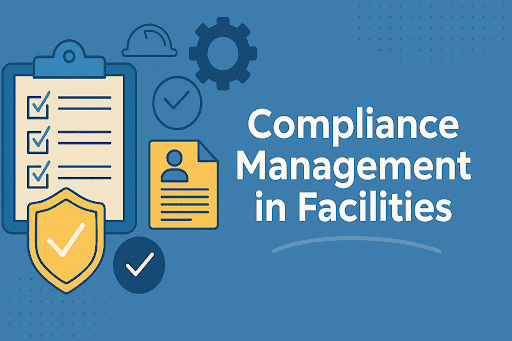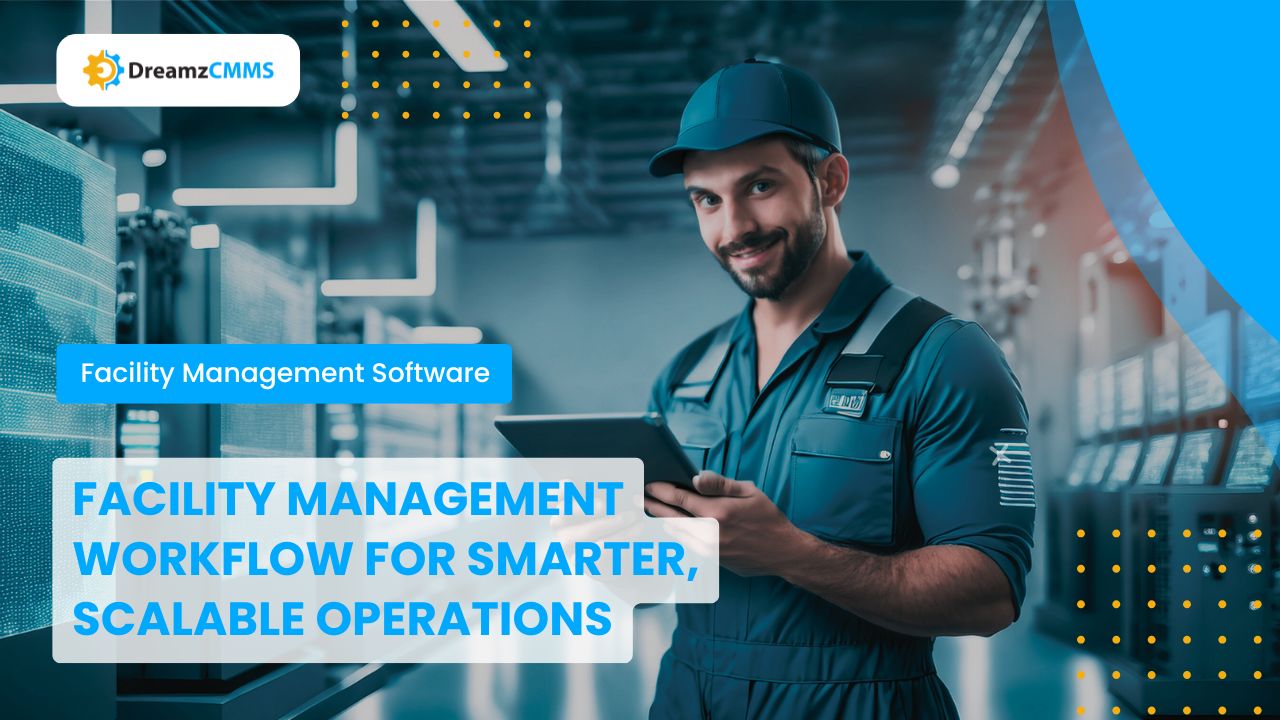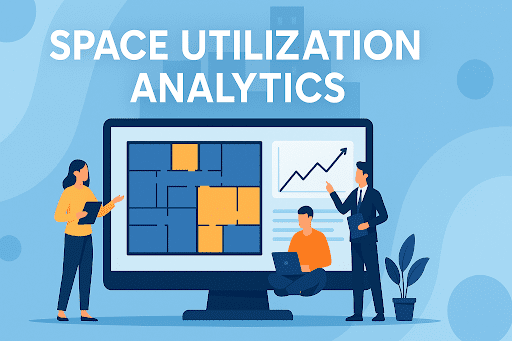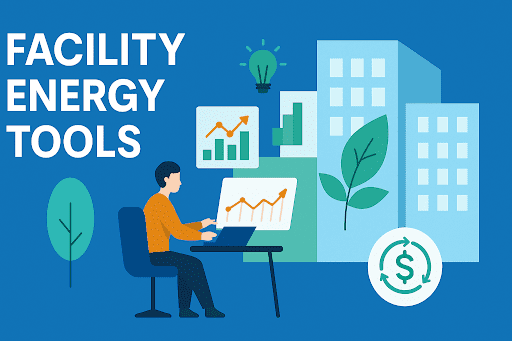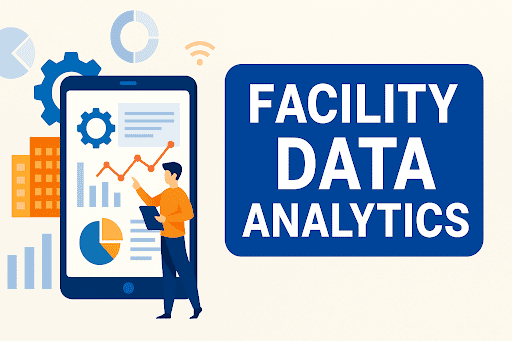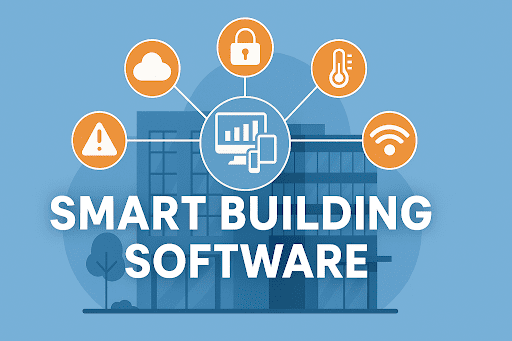 BACK TO Blog
BACK TO Blog
Asset Rental Management
Facility
Digital and data-driven facilities represent the upcoming future of management. The rising need for sustainable and secure infrastructure has made smart building technology adoption more than a passing trend—it is now a fundamental requirement. Smart building solutions are transforming traditional facilities into high-performing assets by using real-time energy monitoring and
- May 22, 2025
- DreamzCMMS Team
- 10 minutes read
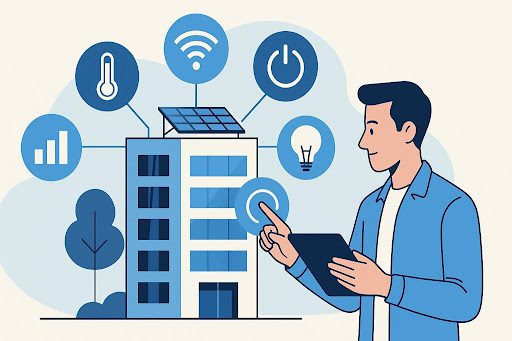
- May 22, 2025
- DreamzCMMS Team
- 10 minutes read
Digital and data-driven facilities represent the upcoming future of management. The rising need for sustainable and secure infrastructure has made smart building technology adoption more than a passing trend—it is now a fundamental requirement. Smart building solutions are transforming traditional facilities into high-performing assets by using real-time energy monitoring and predictive maintenance together with automated building systems.
The blog examines smart facility technology requirements while explaining its benefits together with implementation approaches and demonstrating how IoT integration with building automation systems and smart sensors enhances operational efficiency and user experience in modern buildings.
Looking to streamline your building operations with intelligent maintenance tools?
Explore how Asset Maintenance Management Software from DreamzCMMS helps monitor assets, automate work orders, and improve performance across smart buildings.
What Are Smart Building Technologies?
The implementation of smart building technologies uses data-gathering devices to optimize operational building functions. These include:
- Buildings use IoT integration to instantly capture data through their operational systems.
- The combination of automated HVAC systems with lighting automation delivers both energy efficiency and optimal comfort levels.
- Energy monitoring systems provide facilities with tools to track their consumption and identify opportunities for reduction.
- Smart building predictive maintenance systems enable facilities to prevent costly equipment breakdowns.
- Smart building space utilization systems optimize resource allocation through improved space management capabilities.
The core of this system consists of Building Automation Systems (BAS) which functions as software and hardware that enables centralized control of heating, ventilation, air conditioning, lighting, security and multiple building systems.
Why Implementing Smart Building Technologies Matters
Modern facilities deal with three primary issues: escalating power costs alongside heightened user requirements and mandatory sustainability regulations. The implementation of smart building technologies enables organizations to address these challenges effectively by providing:
1. Operational Efficiency
Automated systems perform tasks independently and make the best use of available resources. Smart sensors combined with analytics enable automatic adjustments of lighting and temperature based on occupancy detection.
2. Energy Efficiency
The implementation of energy-efficient building management allows facilities to decrease their utility expenses by 20-30%. The combination of smart thermostats with occupancy sensors and daylight-responsive lighting creates an efficient system that decreases waste along with environmental emissions.
3. Cost Savings
Smart systems generate extended cost reductions by decreasing power usage alongside automated upkeep and asset extension through predictive maintenance practices in smart buildings.
4. Enhanced User Experience
Occupants receive comfort and safety along with personalized services through smartphone-controlled room settings and real-time indoor air quality monitoring and access control systems.
Key Components of Smart Building Solutions
1. IoT Integration in Buildings
Modern smart facility technology relies on the Internet of Things (IoT) as its essential foundation. The Internet of Things enables devices like thermostats and motion detectors and leak sensors to gather data continuously which gets transmitted to central platforms for analysis and action. The article provides comprehensive guidance about Integrating CMMS with IoT Devices devices by reading our comprehensive post.
Benefits:
- Remote control of systems
- Real-time monitoring
- Data-driven decision-making
- Integration with other building management tools
2. Building Automation Systems (BAS)
BAS provides one unified control center which links facility systems together for unified control of HVAC alongside lighting and fire alarms and security systems and elevator operations.
Key Features:
- Real-time alerts and control
- Scheduled automation
- Central dashboard for monitoring
- Adaptive learning for energy optimization
3. Smart Sensors and Analytics
The energy monitoring systems together with occupancy tracking and air quality management and other applications rely on infrastructure sensors as their essential operational component.
Applications:
- Occupancy sensors for lighting control
- CO2 and humidity sensors for air quality
- Vibration sensors for predictive maintenance
- Infrared sensors for motion detection
4. Automated HVAC and Lighting Controls
Automated systems for heating ventilation and air conditioning along with lighting decrease energy consumption without affecting the comfort of building occupants.
How it works:
- HVAC systems regulate their operations through occupancy levels and weather predictions.
- Lighting operates through sensors which detect motion and daylight exposure levels.
- Systems follow scheduled operation during peak and off-peak hours to optimize efficiency.
Benefits of Energy Efficient Building Management
The consumption of energy in commercial buildings represents about 40% of worldwide energy usage. Smart building solutions address this with:
- Real-time energy monitoring systems to track usage patterns
- Alerts for abnormal energy spikes
- Integration with renewable energy sources
- Automated shutdown of unused systems
These technologies provide actionable insights, allowing facility managers to make data-backed improvements that reduce carbon footprints and operational expenses.
Predictive Maintenance in Smart Buildings
Predictive maintenance stands as one of the most important uses of smart building technologies. Equipment failure response becomes unnecessary through systems which use historical data and real-time sensor inputs to predict upcoming issues.
Predictive maintenance tools:
- The monitoring system tracks machine temperature levels together with vibration measurements and noise patterns.
- Predict wear-and-tear based on usage patterns
- Trigger alerts and maintenance requests before breakdowns occur
The system achieves both equipment availability improvement and asset life extension while reducing repair expenses. This not only reduces downtime but also extends asset lifespan and lowers repair costs. This not only reduces downtime but also extends asset lifespan and lowers repair costs. The combination of RFID Asset Tracking Software with other solutions provides improved visibility into asset locations along with their conditions to support improved maintenance scheduling.
IoT for Facilities Management
The management of facilities now depends on IoT technology to monitor intricate building systems spread across various locations. Key capabilities include:
- Remote access and control of building systems
- Real-time fault detection and resolution
- Usage analytics for better space planning
- Centralized dashboard for unified facility oversight
The automatic data logging capabilities of IoT-connected systems help organizations meet safety standards and regulatory requirements through the production of audit-ready reports. Facility Management Software allows organizations to manage multiple locations through its integrated dashboards and control centers.
Enhancing Space Utilization in Smart Buildings
The value of space grows exponentially in cities because it represents a costly asset. Smart buildings achieve maximum utilization of their space resources through innovative space optimization platforms.
How it works:
- The system uses sensors to track occupancy levels of desks and rooms and parking spaces.
- Utilization data helps reconfigure layouts for efficiency
- Hot-desking and room-booking apps enhance flexibility
- Underused areas are repurposed for value-added services
By using data analytics for space utilization facilities can improve lease agreement management while designing more efficient layouts. Learn more in our blog on Space Utilization Analytics.
Step-by-Step Guide to Implementing Smart Building Technologies
Step 1: Conduct a Facility Assessment
Begin by comprehending the present infrastructure together with energy consumption patterns and system connections and occupant requirements.
Deliverables:
- Energy audit
- Asset performance report
- Infrastructure compatibility analysis
Step 2: Define Objectives
Your organization needs to establish particular targets which must support its strategic vision through energy conservation efforts and maintenance expense reduction and user comfort enhancements and compliance with regulatory requirements.
Examples:
- Reduce energy use by 25% over 2 years
- Implement remote HVAC controls in 100% of zones
- Enable predictive maintenance on all major equipment
Step 3: Select Smart Building Solutions
Select platforms and technologies according to your goals and your budget and your scalability requirements. Common systems include:
- BAS (Building Automation Systems)
- IoT platforms
- Energy monitoring tools
- AI-enabled analytics dashboards
Step 4: Plan for IoT Integration
All legacy systems need to work seamlessly with new technology solutions. Open protocols combined with modular designs enable growth alongside expanding needs.
Step 5: Pilot and Iterate
A test deployment should start on a small scale by using one floor or one building to collect user feedback.
Evaluate:
- Sensor accuracy
- Software performance
- Occupant satisfaction
- Return on investment
Step 6: Full-Scale Rollout
After a successful pilot deployment the expansion of facilities will happen through scheduled timelines and training protocols. A system of ongoing support needs to be established for regular maintenance and update processes.
Overcoming Challenges in Smart Building Implementation
Smart building technology adoption faces several obstacles when organizations try to implement these systems although the advantages are substantial.
1. Integration with Legacy Systems
Modern building systems face compatibility issues when integrated with older facilities that use outdated technology. The implementation of middleware tools and phase-by-phase integration methods through Construction Project Management Software enables the retrofitting of current structures through modular scalable components.
2. High Initial Costs
The significant long-term savings cannot hide the fact that initial expenses remain high. The financial burden on organizations decreases when they use leasing agreements alongside government subsidies and energy-saving agreements.
3. Data Privacy and Security
The operation of smart systems depends on processing extensive data volumes. The protection of cyber risks depends on implementing encryption together with secure networks and role-based access.
4. Change Management
Staff and occupants must adapt to new processes. The process of transition becomes easier through well-planned communication and training along with active participation of everyone involved in the transformation.
The Future of Smart Facility Technology
The development of intelligent buildings integrates artificial intelligence with edge computing and digital twins technology. The following trends will most likely emerge in the future:
- Autonomous buildings that learn and self-adjust
- AI-driven occupant personalization
- Seamless integration with smart city infrastructure
- Wider adoption of sustainable materials and energy sources
The increasing importance of energy-efficient building management combined with Internet of Things (IoT) in buildings will continue to grow because of environmental concerns and digital expectations. Industry Trends in Facility Management trends section offers additional information about emerging developments.
Smart Building Compliance and Sustainability Goals
Smart building technologies serve purposes that extend beyond operational efficiency and cost reduction because they enable compliance and sustainable long-term operations. Smart buildings provide the necessary infrastructure to track and document essential indicators such as energy usage and emissions and resource consumption because environmental regulations continue to tighten.
The automated systems produce audit-ready reports through data collection from HVAC runtimes and air quality sensors and water usage and power consumption which decreases administrative work and enhances transparency.
The implementation of smart buildings enables organizations to achieve green certifications including LEED, WELL and Energy Star. Facilities that implement energy monitoring systems and automated HVAC and lighting controls and smart sensors can decrease their environmental impact while enhancing indoor comfort.
Buildings can achieve more efficient energy storage and redistribution through the growing combination of solar and wind power systems with predictive analytics and smart energy storage solutions.
The implementation of IoT-based water conservation tools which include leak detection systems and weather-based irrigation systems helps organizations achieve their An error occurred while processing your request. Please try again.
Conclusion
Smart building technology implementation serves to revolutionize facility operations and their response mechanisms and evolution capabilities. The adoption of smart building solutions enables organizations to reach superior energy efficiency while improving maintenance practices and enhancing occupant experiences and achieving significant cost savings.
Smart building predictive maintenance and space optimization and real-time energy monitoring systems are among the unlimited opportunities available to organizations. Facilities management organizations should invest in building automation systems and IoT technologies because these technologies will lead us to a more connected sustainable future.
Ready to Upgrade Your Facilities with Smart Building Technologies?Partner with DreamzCMMS to accelerate your journey toward intelligent, connected, and energy-efficient buildings. Book a Free Demo today and see how we can help optimize your facility operations with real-time automation and analytics. |
Ready for More?
Talk to one of our CMMS experts and see how DreamzCMMS can simplify your maintenance operations.
Book a free consultation